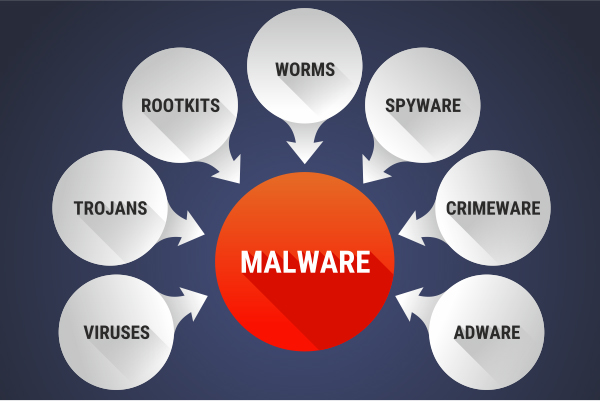5 Ways Secure Cloud
As the world becomes increasingly digital, the need for secure cloud solutions has never been more pressing. Cloud computing has revolutionized the way we store, process, and manage data, but it also introduces a unique set of security challenges. In this article, we will explore five ways to ensure secure cloud computing, providing you with the expertise and knowledge to protect your sensitive data and applications.
1. Data Encryption
Data encryption is the process of converting plaintext data into unreadable ciphertext to protect it from unauthorized access. In the context of cloud computing, encryption is crucial for safeguarding data both in transit and at rest. When data is encrypted, even if an unauthorized party gains access to it, they will not be able to read or exploit it without the decryption key.
How to Implement Encryption:
- Use Secure Protocols: Ensure that data in transit is encrypted using secure communication protocols like HTTPS (Hypertext Transfer Protocol Secure) and SFTP (Secure File Transfer Protocol).
- Encrypt Stored Data: Utilize cloud storage services that offer automatic encryption for data at rest. Look for services that provide server-side encryption and client-side encryption options.
- Manage Keys Wisely: Use a secure key management system to generate, distribute, and manage encryption keys. This includes securely storing keys, controlling access, and rotating keys periodically.
2. Access Control and Identity Management
Access control and identity management are critical components of a secure cloud infrastructure. These systems ensure that only authorized individuals can access cloud resources, thereby reducing the risk of data breaches and other security incidents.
Best Practices for Access Control:
- Implement Multi-Factor Authentication (MFA): Require users to provide two or more verification factors to gain access to cloud resources, significantly reducing the risk of unauthorized access.
- Role-Based Access Control (RBAC): Assign users specific roles within the cloud environment, each with its own set of permissions and access rights. This ensures that users can only access the resources necessary for their job functions.
- Regularly Monitor and Update Access Permissions: As roles and responsibilities change, ensure that access permissions are updated accordingly. Use identity and access management (IAM) tools to automate these processes where possible.
3. Network Security
Network security is vital for preventing unauthorized access to cloud resources. This includes configuring firewalls, intrusion detection and prevention systems, and ensuring the security of virtual networks within cloud environments.
Strategies for Enhanced Network Security:
- Configure Cloud Firewalls: Set up and regularly update cloud firewalls to control incoming and outgoing network traffic based on predetermined security rules.
- Implement Segmentation: Segment cloud resources into different network segments to isolate sensitive data and systems, limiting the attack surface in case of a breach.
- Monitor Network Traffic: Continuously monitor network traffic for signs of suspicious activity, using tools like intrusion detection systems (IDS) and intrusion prevention systems (IPS).
4. Compliance and Governance
Ensuring compliance with relevant regulations and standards is essential for maintaining a secure cloud environment. This involves understanding the legal and regulatory requirements that apply to your data and applications, and implementing the necessary controls to meet these obligations.
Key Steps for Compliance:
- Understand Regulatory Requirements: Familiarize yourself with the laws, regulations, and industry standards that apply to your organization, such as GDPR, HIPAA, or PCI-DSS.
- Choose Compliant Cloud Services: Select cloud service providers that offer compliant services and have undergone the necessary audits and certifications.
- Implement Policies and Procedures: Develop and enforce policies and procedures within your organization to ensure compliance with regulatory requirements, including data handling, storage, and transmission practices.
5. Regular Audits and Penetration Testing
Regular security audits and penetration testing are crucial for identifying vulnerabilities in your cloud infrastructure and ensuring that your security controls are effective.
Audit and Testing Best Practices:
- Conduct Regular Vulnerability Scans: Use automated tools to scan your cloud environment for known vulnerabilities and weaknesses.
- Perform Penetration Testing: Engage with ethical hackers or use penetration testing tools to simulate real-world attacks, identifying how attackers might exploit vulnerabilities in your cloud setup.
- Implement Incident Response Plans: Develop and regularly test incident response plans to ensure your organization is prepared to respond effectively in case of a security incident.
Conclusion
Achieving secure cloud computing requires a multi-faceted approach that encompasses data encryption, access control, network security, compliance, and regular audits. By implementing these measures and staying informed about the latest security threats and technologies, organizations can safeguard their cloud environments and protect their valuable data and applications. Remember, security is an ongoing process that requires continuous monitoring, improvement, and adaptation to the evolving landscape of cloud computing.
What is the most critical aspect of cloud security?
+While all aspects of cloud security are important, data encryption stands out as particularly critical. It protects data from unauthorized access, ensuring confidentiality and integrity, whether the data is in transit or at rest.
How often should I conduct security audits in the cloud?
+Security audits should be conducted regularly, ideally on a quarterly basis, to identify and address potential vulnerabilities and compliance issues. This frequency can be adjusted based on the sensitivity of the data stored and the specific security requirements of your organization.
What are the benefits of using a managed cloud service for security?
+Using a managed cloud service for security can provide several benefits, including access to advanced security tools, specialized security expertise, and enhanced monitoring and response capabilities. This can be particularly beneficial for organizations that lack the resources or expertise to manage security in-house.



